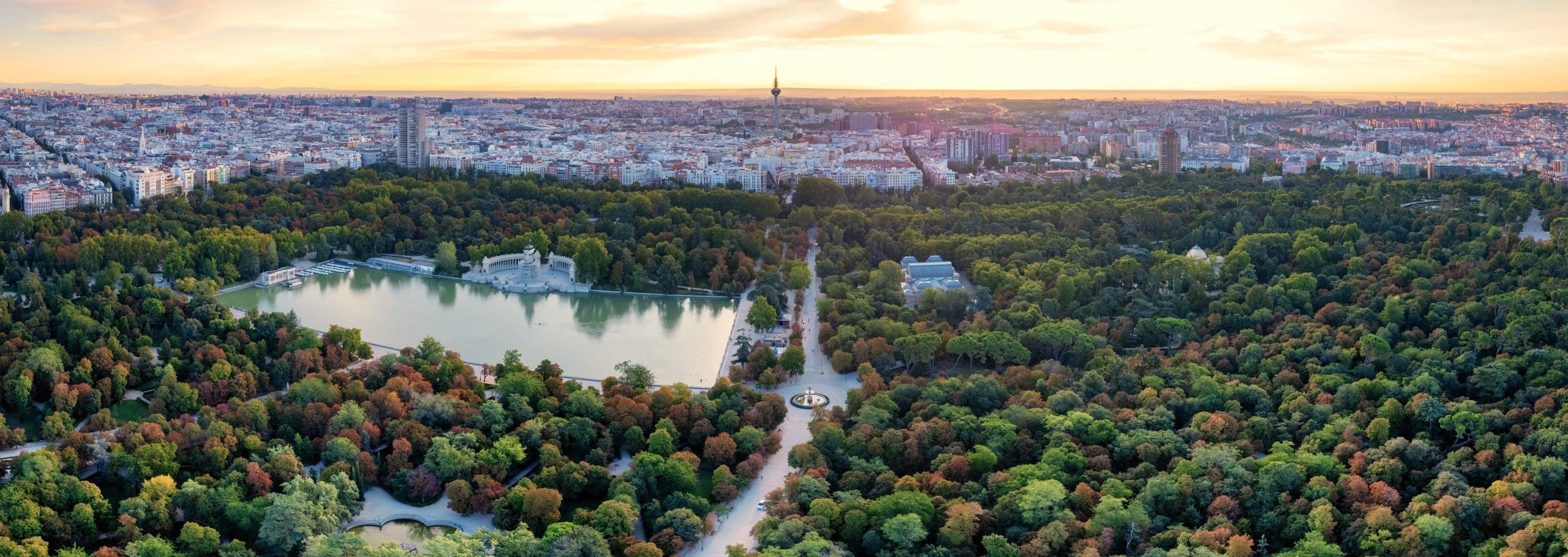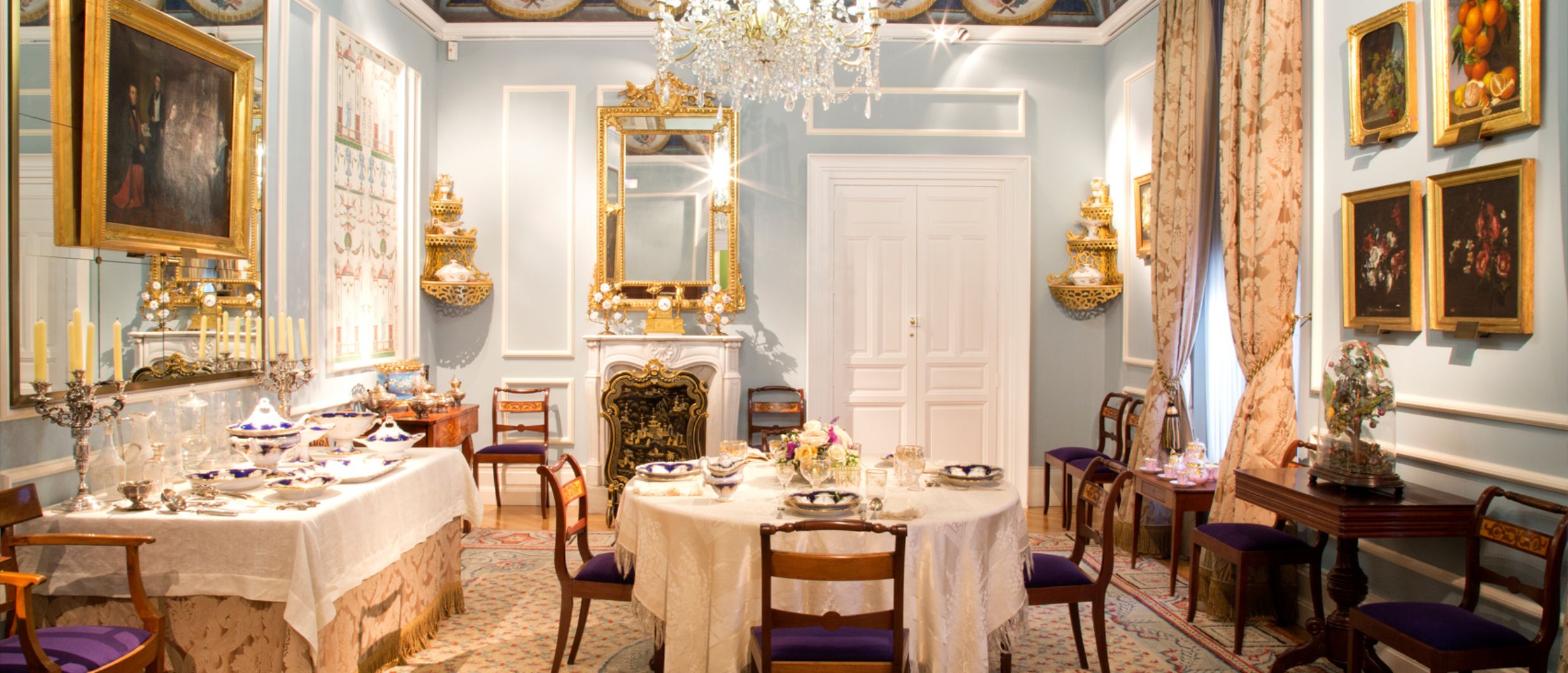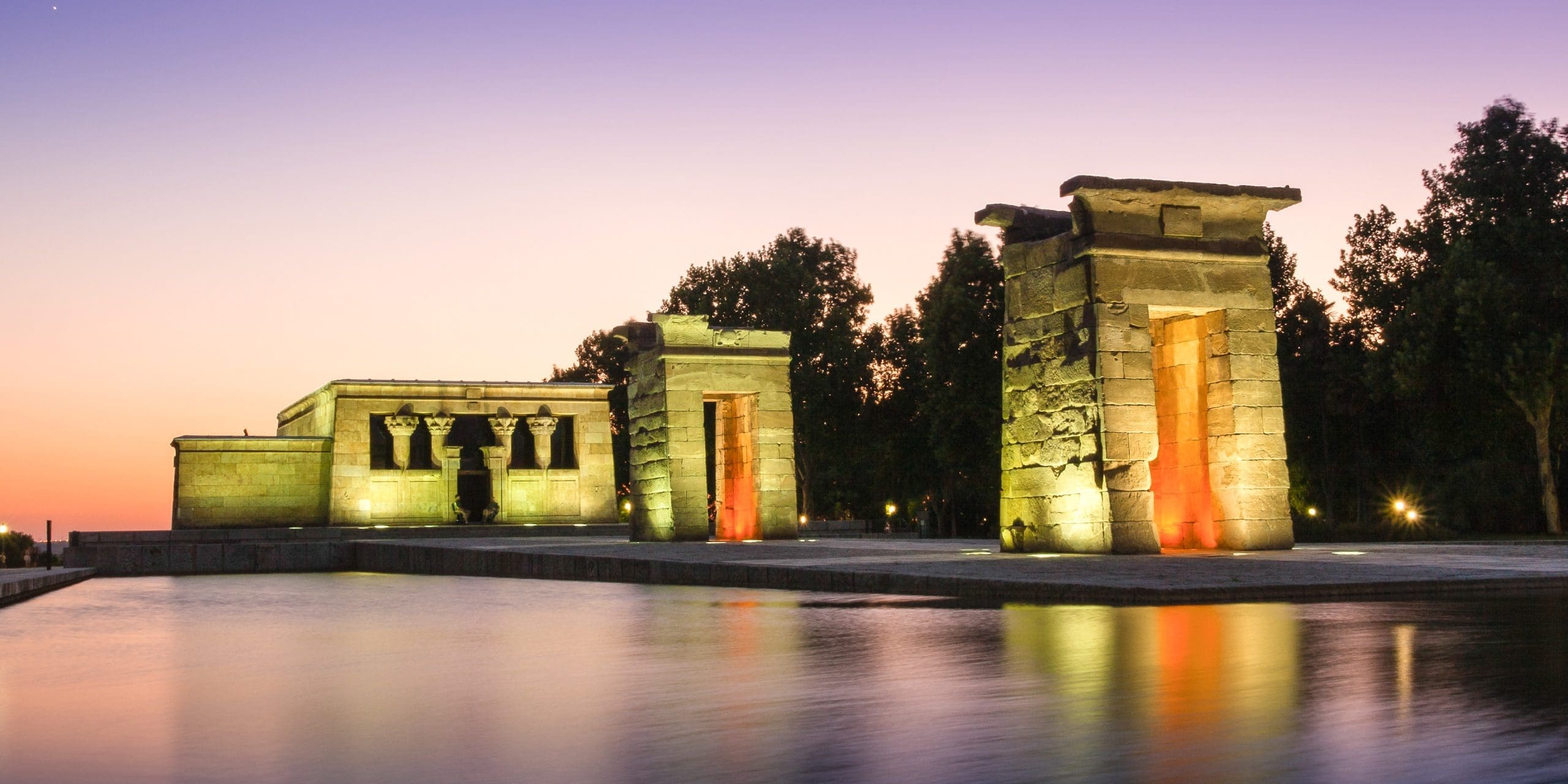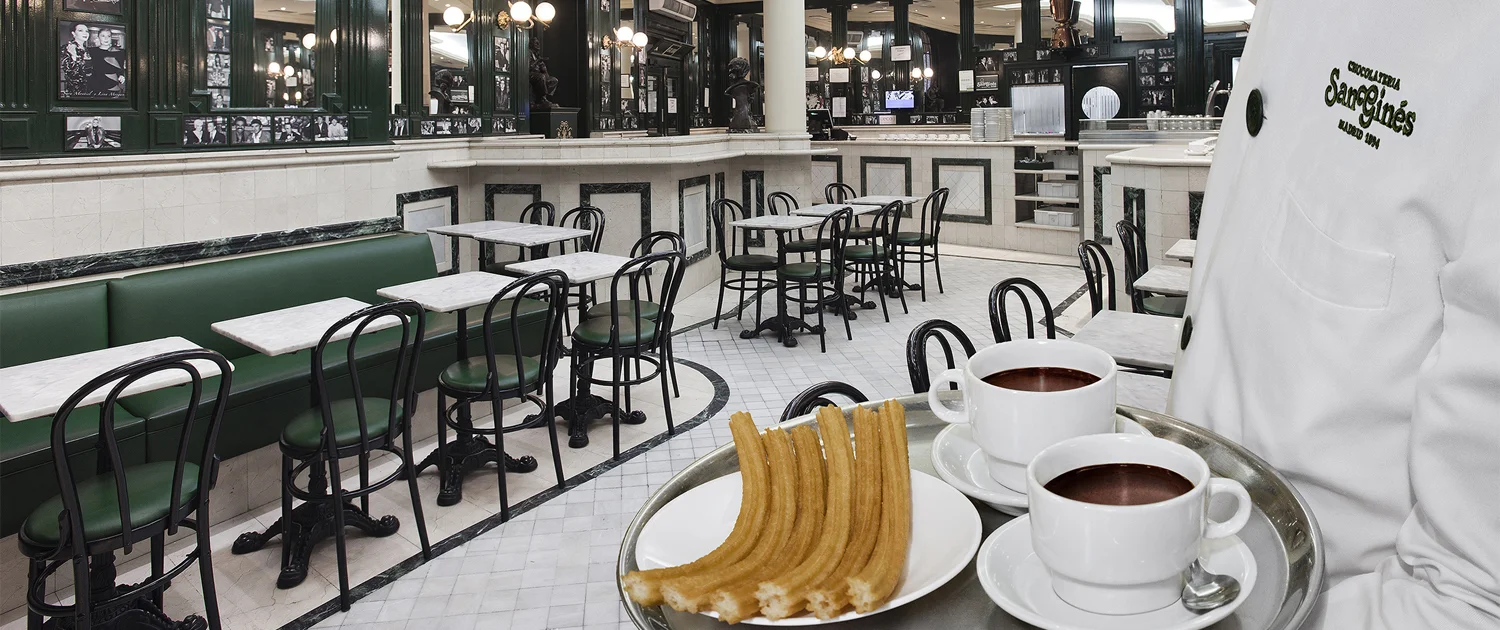Our Favorites in Madrid
A tour that invites you to enjoy the city at a leisurely pace
Madrid is a city that never runs out of things to do. Beyond its grand avenues and most photographed monuments, it hides corners full of character, flavours that tell stories and addresses that only the most curious Madrileños know about. This tour brings together some of our favourite places, from museums with soul to iconic restaurants, shops that are real treasures and unique spaces that surprise even those who have been visiting for years. A guide to discovering — or rediscovering — the capital with a different perspective.

Museums with their own soul
Small cultural temples that captivate with their character
If this is your first time in Madrid, visiting the major names is almost mandatory: the Prado Museum, the Reina Sofía Museum and the Thyssen-Bornemisza Museum, three pillars that summarise centuries of art and form part of the city’s cultural identity. But if you have more time, or have already enjoyed these collections on other occasions, Madrid also has smaller museums that captivate visitors with their charm, intimacy and unique personality.
In the Salamanca district, the Lázaro Galdiano Museum surprises visitors with the breadth and diversity of its collection. More than 12,000 pieces gathered by publisher and collector José Lázaro Galdiano are displayed in an elegant mansion surrounded by gardens. Paintings by Goya, Bosch, and El Greco coexist with jewelry, textiles, miniatures, and antique weaponry, offering an experience that combines art, history, and the stately atmosphere of the early 20th century.
Very close to Plaza de España, the Cerralbo Museum offers a glimpse into aristocratic Madrid at the end of the 19th century. Formerly the residence of the Marquis of Cerralbo, it retains its original décor intact: chandeliers, ballrooms, collections of Baroque paintings, oriental porcelain and classical antiques. Visiting it is like walking through a home that seems frozen in time, with each room telling a different story.
In the heart of Chamberí, Joaquín Sorolla’s former home and studio has become one of the city’s most luminous spaces. The Sorolla Museum not only brings together a masterful selection of his work, but also preserves his furniture, personal objects and a garden designed by the painter himself, evoking Andalusian courtyards and Valencian orchards. It is a place where art blends with the artist’s everyday life.
At the heart of Madrid, the Museum of Romanticism offers a journey into 19th-century Spain through furniture, paintings, porcelain, fans and decorative pieces. Among its treasures is a lesser-known version of Goya’s Saturn Devouring His Son Among its treasures is a version of Goya’s Saturn Devouring His Son. Its charming café, located in the inner courtyard, is the perfect place to stop and enjoy the calm before returning to the streets of the city.

Flavors of Madrid
From the bar to the table, with a Madrid accent
In Madrid, food is part of the city’s identity. This curated selection highlights restaurants that, in many cases, have been part of the city’s gastronomic landscape for decades. Places where traditional cuisine is still alive—reinterpreted or not—but always with respect for the product and the warm hospitality that turns a meal into a memorable experience.
La Vinoteca Moratín, Bodega La Ardosa, and Sala de Despiece are three very different stops united by their devotion to product quality and experience. Moratín, intimate and peacefull, offers a market- menu paired with a careful selection of wines. La Ardosa, traditional and century-old, is a temple of draft vermouth and its legendary Spanish omelet, served at a bar steeped in history. Sala de Despiece breaks conventions with its presentation: here, the product is presented almost like a work of art, and diners engage in a visual as well as gastronomic experience.
On Zorrilla Street, La Ancha keeps traditional Madrid cuisine alive, while Fismuler on Sagasta Street is its younger, more casual sibling, Both share a family heritage and same culinary philosophy based on fresh produce anda unpretentious cooking, but each expresses it with its own character: tradition at La Ancha, urban creativity at Fismuler.
Sacha is another world: a timeless classic blending tradition and authorship without ostentation, with seemingly simple dishes of exceptional flavor. For many, it is one of the city’s great gastronomic temples.
Among the great icons of Spanish cuisine in Madrid, there are names that are part of the city’s gastronomic history. Zalacaín, a pioneer of haute cuisine in Spain, maintains impeccable service and recipes that are now tradition. At Lhardy, Madrid’s cocido (chickpea stew) has been served with the same protocol and flavour since 1839, a ritual that is part of the capital’s identity. Lucio’s huevos estrellados (broken fried eggs), in Cava Baja, continue to attract both locals and distinguished visitors. El Corral de la Morería, as well as being one of the best flamenco venues in the world, offers a culinary experience that combines spectacle and taste.

Shopping with personality
Objects and places that tell stories
Madrid is full of shop windows, but there are some that go beyond the purely commercial and become little capsules of beauty, tradition and creativity. They offer not only products but the story of their creators and the essence of the city. Here we bring together some of our favourites, perfect for those who want to take home something more than just a souvenir from Madrid.
Entering Bombonería La Pajarita is like opening a time capsule. Founded in 1852, this gem in the Salamanca district wraps its artisan chocolates and candied fruits in coloured tissue paper, keeping intact recipes that have been sweetening Madrid for more than a century and a half.
Among the most beautiful shops in the city is La Postalera, a place where postcards are no longer just souvenirs but become small works of art. Its original illustrations and limited editions invite you to pause and calmly choose the perfect message.
In the heart of historic Madrid, Plaza de la Paja is home to Cocol, much more than a traditional craft shop. It is a space where Spanish craftsmanship comes to life. Each piece has been carefully selected to represent the know-how of generations of artisans, blending tradition and design. Here, the charm of handmade items is combined with the best materials and techniques that have stood the test of time, offering visitors the opportunity to discover the true essence of Spanish craftsmanship.
Another of our favourites is Javier Sánchez Medina’s workshop, a sanctuary of natural fibres. His wicker mirrors and decorative pieces have captivated interior designers from all over the world, but perhaps his most media-friendly moment came when Sarah Jessica Parker visited the shop and purchased one of his braided heads, an image that went viral thanks to her Instagram.
Gold & Roses jewellery tells miniature stories. Designed and handmade in Spain, it combines delicate craftsmanship with a contemporary approach that has led it to shine on red carpets and in international fashion editorials.
In the universe of Spanish designer Andrea Zarraluqui, tableware becomes a canvas. Renowned for her vibrant style and meticulous craftsmanship, she transforms each plate and platter into a unique, hand-painted piece, with intense colours and personalised motifs that turn the table into an aesthetic and personal experience. Visiting her studio-workshop in Madrid is like stepping into a world where art is served on porcelain, with the unmistakable stamp of contemporary Spanish design.

Places steeped in History and Charm
Unique and surprising places to be found in Madrid
Finally, we propose a selection of special sites well worth a visit. They are all very different so you can choose the one you like best or set out to discover them all
The Temple of Debod, in the heart of Parque del Oeste and a short walk from Plaza de España. It was a gift from Egypt to Spain in 1968 as a token of gratitude for its help in saving Nubian temples. It is one of the most magical spots in Madrid. Its stones, with more than 2,200 years of history, preserve original hieroglyphics and, at dusk, its silhouetted is framed against a sky tinged with gold and purple.
The rooftop terrace of the Círculo de Bellas Artes, located on Alcalá Street next to Gran Vía, offers one of the most impressive panoramic views of the city, stretching from the Metropolis building to the Guadarrama mountains on clear days.
Among Madrid’s most striking curiosities we have ‘La Libertad’ (Freedom), a sculpture by the Aragonese artist Ponciano Ponzano located in the Pantheon of Illustrious Men, next to the Basilica of Nuestra Señora de Atocha. Carved in white marble in 1853 —23 years before the famous Statue of Liberty in New York— it depicts a female figure wearing a Phrygian cap, holding a sceptre and an open book bearing the date of the promulgation of the Spanish Constitution of 1869. Could Bartholdi have been inspired by this work to conceive his iconic creation in New York?
Iin the heart of Retiro Park, the sculpture of the Fallen Angel stands as a global rarity: it is the only monumental sculpture of the devil in a public space of this kind. Ricardo Bellver created it in 1877, inspired by John Milton’s Paradise Lost, and the most disturbing thing is that it is located exactly 666 metres above sea level, a figure that fuels all kinds of legends. Its pedestal, adorned with demonic figures and snakes, reinforces the sense of mystery that surrounds this place.
And among those places that form part of Madrid’s identity, Chocolatería San Ginés deserves a special mention. Opened in 1894, it is famous for its churros and porras with thick hot chocolate, served at any time of the day or night. Its white-tiled dining room decorated with old photographs has witnessed generations of Madrileños and visitors who have made this stop an essential ritual before leaving the city.
Among Madrid’s most striking curiosities is the sculpture ‘La Libertad’ (Freedom)—created 23 years before the famous Statue of Liberty in New York
Could Bartholdi have been inspired by this work when conceiving his iconic New York creation?
Would you like us to organize a customized
private tour of Madrid?
Contact us here
hola@theotherspaintours.com





